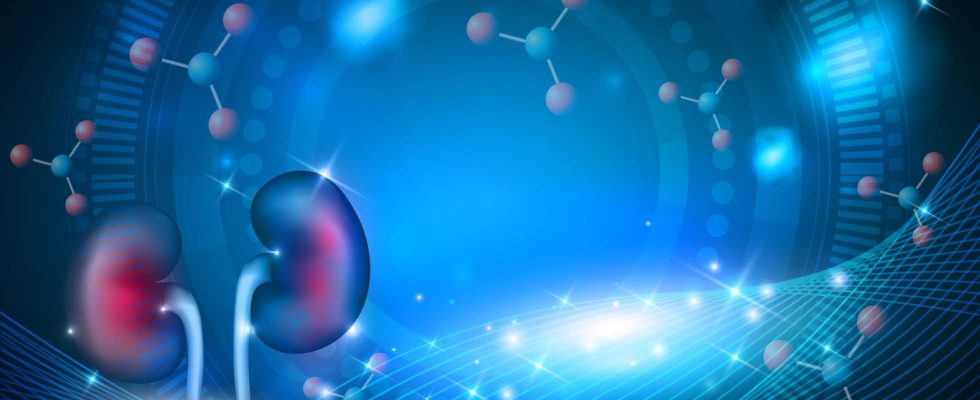Cystinosis is a genetic disease characterized by an accumulation of cystine, an amino acid, in the cells of certain organs.
Cystinosis is a metabolic condition that is characterized by excess cystine (amino acid) in several organs such as the brain, kidneys, pancreas and eyes. Cystine is formed in the heart of cells, in a part called the lysosome. “When everything is functioning normally, cystine is evacuated from the lysosomes thanks to a specific transporter, cystinosine. But sometimes, this transport is poor and cystine then accumulates in the tissues, disrupting the functioning of the kidneys“, explains Dr Monique Quillard, general practitioner. It’s a hereditary illness. Its prevalence is 1 case in 200,000. There are three forms of cystinosis with varying symptoms. according to the age of onset of the disease:
- The infant form is the most common and the most serious. It manifests itself in infants from 3 months of age by kidney damage. “It causes severe complications: kidney failure before the age of 12, digestive symptoms, chronic dehydration and growth disorders (rickets). It is also the stunted growth and rickets that raise suspicion of the disease in young children.specifies Dr. Quillard. Renal failure then sets in gradually.. It can also be characterized by ocular damage with photophobia (sensitivity to light) and tearing.
- The juvenile form cystinosis occurs in children from 8-10 years old, with kidney damage as the main symptom. It also progresses to renal failure in adolescence.
- The signs of a adult cystinosis are generally limited to ocular damage with a lesser degree of severity.
When cystine accumulates in the cells of kidneysdoctors speak of “nephropatic cystinosis”.
“Cystine deposits can be made in the cornea, conjunctiva and retina, says our expert. They can be responsible for photophobia.. This condition appears around the age of 3.
“Fanconi syndrome is secondary to a reabsorption defect in the proximal tube leading to excessive loss of amino acids, glucose, phosphorus, bicarbonate and other electrolytes, explains the doctor. Children then develop growth retardation, rickets, polyuria and dehydration“. The most common cause of the appearance of this disease is cystinosis.
The first signs of the disease appear in babies between 3 and 6 months. They refuse to eat, vomit often, drink and urinate a lot, and show stunted growth.
Two situations:
- Either the disease appeared in adulthood, so the symptoms are mainly ocular.
- Either it is an adult who started the disease in childhood and it is renal insufficiency which dominates, with also the possibility of thyroid insufficiency, diabetes, etc.
The disease is hereditary and genetic, linked to the mutation of the cystinosine gene. It is a genetic condition with autosomal recessive transmission: both parents must carry the mutated gene in question.
It is done via a blood test in order to measure cystine in white blood cells. “It is then carried out between 3 and 4 times per year as part of disease monitoring. A ophthalmological examination can complete the diagnosis to observe the condition of the cornea and retina “adds Dr. Quillard. Prenatal diagnosis of cystinosis is possible in the event of a family history, after having had a first child affected by the disease.
Without treatment, the infantile form progresses to terminal chronic renal failure and even ends up involving other organs: the eyes, the thyroid, the pancreas… “But there is a molecule that allows cystine to be evacuated from cells: cysteamine, says the doctor. It is to be taken for life. There are currently two medications: Cystagon to be taken every 6 hours and Procysbi every 12 hours. It helps slow the progression of the disease and avoid complications. “. To this treatment is added the taking of a eye drops in case of eye damage and treatment or prevention of rickets in cases of growth retardation. Follow-up consultations are required several times a year to perform blood and urine checks. The child can often lead a normal life and school by complying with his treatment.
The treatment greatly improves life expectancy. But it rarely exceeds 30-35 years.
Thanks to Dr Monique Quillard, general practitioner.
